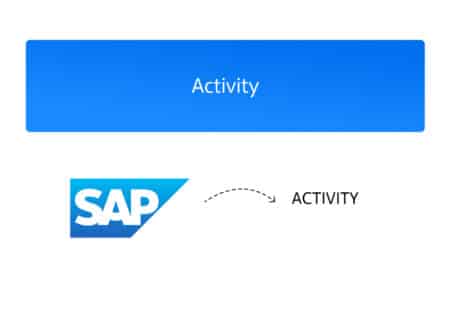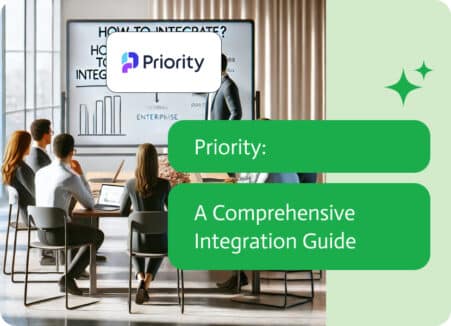

Noca vs Emergent: The Digital Employee Platform Showdown
Walk into any boardroom in 2025 and you’ll hear the same refrain. Endless manual tasks are suffocating teams. IT backlogs stretch into geological timescales. Employees want self-service. Leaders today want operational and organizational efficiency and want to get it without hiring armies of developers. Meanwhile, every software vendor out there these days promises “prompt automation” like it’s a cure-all vitamin gummy. Two AI agents platforms which have been stirring up more buzz than a swarm of caffeinated bees: Noca AI vs. Emergent.
At a surface glance, they look like siblings. Both take what you describe in normal language and turn it into something working, both allow non-developers to unlock what used to require engineers, and both promise speed that feels borderline illegal.
Yet under the hood, their missions diverge wildly, and you notice they have very different goals.
Noca has been engineered so you can create workforce-ready AI employees that automate business operations, build internal apps, handle end-to-end data flows, and power AI chat agents that work across your enterprise tech stack.
Emergent, in somewhat of a contrasting fashion, acts like an overachieving coding companion with its primary goal being that it is determined to ship actual production software for new products. It’s aimed at founders, build-fast startups, and teams who want a fully deployed app tomorrow morning.
So, it’s not really about which one is better, as such, it’s more about which one solves the problem you actually have. Let’s forget the marketing hype and look at the real differences.
Noca vs. Emergent: How They Think About Work
Noca approaches automation the same way you think an operational mastermind would. Human processes have rules, exceptions, approvals, data handoffs, compliance requirements, timing sensitivities…all bundled together in a package of chaos. Noca gives you digital employees who manage those tasks from end to end without drama.
None of those robotic scripts, and no tangled spreadsheets. Digital workers who understand:
- A PTO request during payroll cut-off needs a different path
- A new hire without a manager in the HRIS requires resolution
- A customer address change touches six integrated systems
- An invoice stuck in approval purgatory hurts cash flow
The ultimate goal here is to run business operations smoothly, not just automate a few things here and there.
That thinking also applies to creation, too. Noca’s vibe coding lets business users build:
- Full workflows that stretch across the enterprise
- Zero-code internal apps that natively connect with your framework stack
- Chatbots that actually converse with employees or customers
- End-to-end digital employees who handle processes independently
You don’t just automate clicks. You automate complete outcomes.
Emergent took a wildly different swing. Its founders come from a deep engineering lineage, think theoretical computer science, and have YC backing. The platform’s heartbeat is application creation. Not little demos. Not UI mockups. Real stack software with frontends, backends, databases, auth flows, and deployments.
You basically describe what you want, like “a real estate SaaS platform,” “an AI notes app,” or “a knowledge sharing base,” and Emergent’s agents generate code, test and fix errors, wire integrations, and push to production.
Although Noca prides itself on being an all-in-one platform that can do what Emergent does, they have slightly different goals and different buyers.
Noca vs. Emergent: Day-One Experience
Here is where the vibe really splits.
For Noca users, the environment feels like welcoming a hyper-competent teammate to the company. Within hours, HR operations teams are sketching their onboarding journeys, syncing applicant tracking systems with HRIS databases, automating equipment assignments, and building self-service portals. They know their processes deeply. Finally, they can fix them without submitting a prayer-filled IT ticket.
The interface continues to give you improvement suggestions and tips as you go. It flags missing approvals and notices when one system outputs data in a format another system hates. Collaboration is built in, so operations, HR, finance, and support folks iterate together. There’s a strong sense of “I’m actually fixing this for real today,” and all without needing to write a single line of code.
Emergent’s onboarding sparkles too, only in a very different flavor. You’re in conversation with artificial developers building an app for you in real time. Files populate onscreen like watching code rain in The Matrix. Tests run. Deployment fires. You sip coffee with giddy disbelief as a working product appears without touching VS Code.
Yet once the initial magic settles, users find they need to know what good product design looks like. How should authentication work? And what data models make sense? Which user roles should exist? You don’t need to be an engineer, but you do need product intuition if the app goes beyond “simple demo.”
It’s essentially the difference between understanding operations versus app architecture. Each platform speaks fluently to one of those audiences, but only one can do it all. Noca.
The Problems They Solve
Picture a brand-new employee being hired. Without automation:
- Someone sends six emails to IT
- Another manually adds accounts to every system
- Equipment requests get lost in inbox quicksand
- Compliance docs go unsigned for days.
- Welcome messages are sent late or forgotten.
- HR chases 45 different loose ends
With Noca?
The digital employee takes charge the millisecond “Offer accepted” rolls in. It requests paperwork, provisions accounts, syncs data to payroll and benefits systems, schedules onboarding sessions, assigns training modules, collects required signatures, orders equipment, checks status, and politely nudges humans only when needed.
You just show up and focus on the part that people are good at. That operational capability extends across the whole business:
- Finance processes invoices with intelligent routing
- Customer support escalations get handled consistently
- CRM and ERP data stays perfectly aligned
- AI chatbots deliver information instantly
- Internal apps give teams smoother workflows
Noca is the proverbial invisible work engine keeping teams out of spreadsheet jail.
Emergent’s domain looks very different. It handles the steel-reinforced structure of software products. Say you want to launch a subscription SaaS product for content creators. Emergent can:
- Create React pages for onboarding
- Generate FastAPI backend logic
- Spin up a MongoDB instance
- Wire Stripe for recurring payments
- Implement auth flows and roles
- Deploy to a hosting environment
The outcome isn’t just internal efficiency. It’s a business you can sell.
People use it to build:
- Startup MVPs
- Client websites
- Slack apps and Figma plugins
- Tools and extensions
Both are impactful. The value just plays out in different life-or-death problems. However, I cannot stress this enough: Noca provides all the same opportunities and features, but with an entire toolbox to make it more efficient.
Noca vs. Emergent Pricing: Predictability vs. Surprise
Most companies don’t run on fairy dust budgets, which means that predictability matters.
Noca keeps things refreshingly straightforward. Real free tier, real usability, real scaling model. If workflows grow, spending scales logically. If they shrink, you adjust. Finance leaders will welcome that cost-control sanity.
Emergent follows a credit-consumption model that feels more like you’re gambling at a casino. Building apps costs credits, and testing costs credits, which means that if something loops or needs revision? Farewell credits.
Some users praise it for replacing weeks of developer time. Others report being surprised when their allocation evaporates before achieving a stable app. Pricing here is something to really consider carefully, especially in the long run.
Integration Power: The Glue That Most Businesses Forget Exists
This is arguably Noca’s superhero moment.
Connecting Salesforce to Workday while keeping data cleansed, mapped, and governed is not glamorous, except it totally is when your business stops tripping over these headaches.
Noca’s integration library covers the systems that matter in any business: HRIS, CRMs, ERPs, IT service desks, payments, and communication tools. Not just shallow API pokes. It’s full data relationships and full workflow context with complete enterprise trust.
Emergent supports APIs, too, though in a product-integration sense. You can connect payment systems, bring in spreadsheets, sync with Notion workspaces…but if your goal is “sync employee changes across seven business systems,” that is not really its purpose.
- Emergent’s integration story: apps that talk outward.
- Noca’s integration story: businesses that finally talk internally.
Security: Compliance Is Not Optional
When digital employees are tasked with managing highly classified org data, mistakes cost careers.
Noca built its architecture with compliance off the bat. The TRAPS framework: Trusted, Responsible, Auditable, Private, Secure. Which means you get data governance and accountability from day one. Enterprises in those ruthlessly regulated markets can breathe easier here.
Emergent gives full ownership of code, which is fantastic for developers and product teams. You can harden it, extend it, lock it down however you choose. Yet the final responsibility sits on the builder. Enterprise compliance teams will have follow-up questions.
- Noca = compliance-ready out-of-the-box
- Emergent = secure if you take the reins properly
Both can be safe. One is already dressed for the audit meeting.
Who Should Choose What?
If your challenge sounds like:
- HR drowning in manual onboarding
- Finance buried in approvals
- Ops fighting disconnected systems
- Elbows-deep administrators holding the business together manually
- Employees begging for self-service
- Need internal apps and AI-driven chatbots that integrate everywhere with everything
You’re not trying to invent new software, even though you could if you wanted, you’re trying to stop your existing machine from leaking oil. That is Noca’s territory.
You describe the needed outcomes, and digital employees take over. You build real internal apps with zero code. You deploy chatbots that truly comprehend everything from your data to policies, and you fixed operational chaos the same week you decided it mattered.
If your challenge sounds like:
- New SaaS idea needs a fast MVP
- Investors are demanding a demo yesterday
- Building apps without hiring devs
- Product speed is the competitive advantage
- Freelance storefront for client work
- Experimentation is cheaper than engineering time
Push the magic button, watch code assemble itself, and iterate faster than most of its rivals without burning runway. Both offer phenomenal outcomes, but both are wildly different return on investment paths.
The Bottom Line: Clarity Ends Confusion
These two platforms are not arch-enemies battling for the same space. One is built for the work already overflowing inside your company. The other is built to help you launch something new.
- Emergent helps dreamers build products at blistering speed.
- Noca helps businesses streamline without adding headcount.
Most teams researching automation are probably not trying to start a software company. They’re trying to reclaim human hours buried in repetitive, time-consuming jobs and reduce operational friction that erodes customer and employee experience.
For that vast majority? Noca wins. Full stop.
Digital employees are real, and they’re fast. They’re proven to deliver measurable ROI within weeks, they automate without asking you to learn code, and they integrate the stack you already pay for. They build useful applications and artificially intelligent chatbots that people can actually use — often through a simple prompt-to-app approach. They quietly lift the weight off your team’s shoulders and let people turn their attention to work worthy of our species.
Emergent is definitely pushing into new ground in exciting ways, and it deserves applause for the future it’s creating. Yet when companies need operational transformation right now, Noca isn’t just an idea; it’s a full-on working solution.


